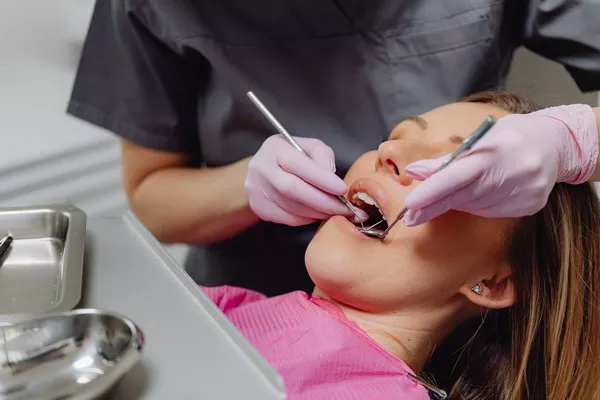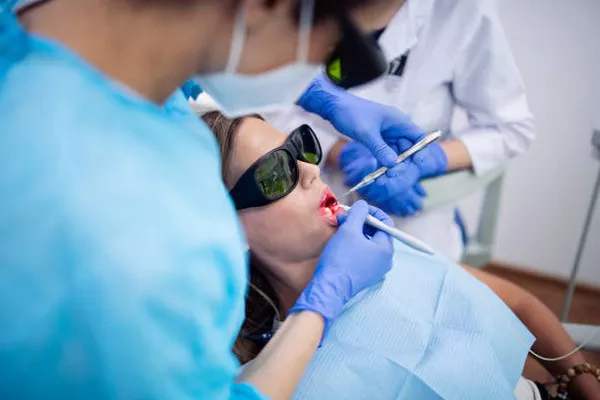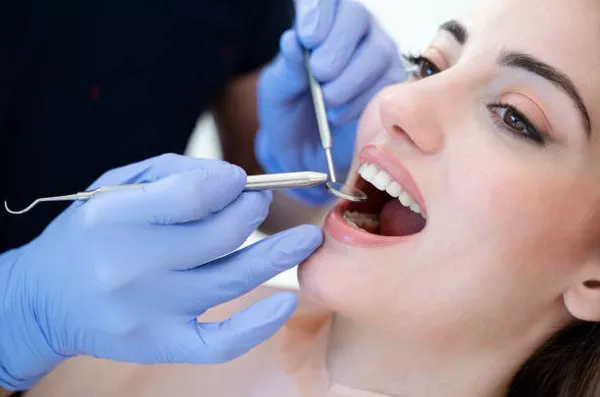Gingivitis is a common and mild form of gum disease that causes irritation, redness, and swelling of your gingiva, the part of your gum around the base of your teeth. Left untreated, gingivitis can lead to more severe gum disease and even tooth loss. Fortunately, gingivitis is preventable and can often be managed effectively at home with proper oral hygiene practices and lifestyle choices. This guide will walk you through the most effective strategies to prevent gingivitis at home.
Effective Oral Hygiene Practices
Maintaining good oral hygiene is the cornerstone of preventing gingivitis. Here are the key practices you should incorporate into your daily routine:
Brushing
Encourage regular toothbrushing at least twice a day using a soft-bristled brush. Proper technique matters:
- Angle your brush: Place the toothbrush at a 45-degree angle to the gums.
- Short strokes: Use gentle, back-and-forth strokes to brush the outer, inner, and chewing surfaces of your teeth.
- Brush thoroughly: Ensure you brush for at least two minutes each time.
- Be gentle near the gums: Avoid brushing too hard near the gums to prevent irritation and damage.
Regular brushing helps remove the plaque that forms on your teeth, which is a sticky film of bacteria that can cause gingivitis if not properly managed.
Flossing
Emphasize the importance of cleaning between teeth daily using dental floss. Proper technique includes:
- Use enough floss: Break off about 18 inches of dental floss and wind most of it around each middle finger, leaving an inch or two of floss to work with.
- Be gentle: Hold the floss tightly between your thumbs and forefingers and gently insert it between your teeth.
- Form a C shape: Curve the floss into a C shape against one tooth and slide it up and down the side of the tooth and under the gumline.
- Repeat: Use clean sections of floss as you move from tooth to tooth.
Flossing removes food particles and plaque from between your teeth and under the gumline where your toothbrush can’t reach.
Mouthwash
- Why alcohol-free: Alcohol-free mouthwashes are less likely to cause dryness and irritation of the oral tissues.
- Antimicrobial properties: Choose a mouthwash that has antimicrobial properties to help reduce bacteria in the mouth.
Rinsing with mouthwash can help reduce the bacteria that cause plaque and gingivitis.
see also: How to get rid of gingivitis in one day?
Saltwater Rinse
- How to make it: Mix 1 teaspoon of salt into 1 cup of warm water.
- Rinse properly: Swish the solution around your mouth for about two minutes, three times a day.
Saltwater rinses can help reduce inflammation and promote healing of the gums by killing bacteria and soothing inflamed tissues.
Chlorhexidine Mouthwash
- Use as directed: Chlorhexidine mouthwash is typically used for a short duration under the guidance of a dentist, usually for about two weeks.
- Benefits: It has strong antibacterial properties and is effective in controlling plaque and reducing gingivitis.
Regular Dental Check-ups
- Professional cleaning: Dental cleanings remove plaque and tartar that regular brushing and flossing cannot.
- Early detection: Regular visits allow your dentist to detect and treat early signs of gingivitis and other oral health issues before they become severe.
Consistent professional care is essential to maintaining optimal oral health and preventing gingivitis.
see also: What is the best toothpaste to fight gingivitis?
Lifestyle Factors
Avoid Smoking or Chewing Tobacco
- Tobacco effects: Smoking or chewing tobacco can weaken your immune system, making it harder for your body to fight off gum infection. It also hinders the healing of gum tissue.
- Quitting benefits: Quitting tobacco use can significantly improve your gum health and overall oral health.
Limit Sugar Intake
- Bacteria feed on sugar: When you consume sugary foods and drinks, the bacteria in your mouth produce acids that can erode your tooth enamel and irritate your gums.
- Healthy alternatives: Opt for healthier snacks and drinks that are low in sugar to reduce the risk of plaque buildup.
Replace Toothbrush Regularly
- Why replace: Worn-out bristles are less effective at cleaning your teeth and can harbor harmful bacteria.
- Signs to replace: Replace your toothbrush sooner if you notice the bristles are frayed or after recovering from an illness.
Lifestyle Factors
Avoid Smoking or Chewing Tobacco
- Tobacco effects: Smoking or chewing tobacco can weaken your immune system, making it harder for your body to fight off gum infection. It also hinders the healing of gum tissue.
- Quitting benefits: Quitting tobacco use can significantly improve your gum health and overall oral health.
Limit Sugar Intake
- Bacteria feed on sugar: When you consume sugary foods and drinks, the bacteria in your mouth produce acids that can erode your tooth enamel and irritate your gums.
- Healthy alternatives: Opt for healthier snacks and drinks that are low in sugar to reduce the risk of plaque buildup.
Replace Toothbrush Regularly
- Why replace: Worn-out bristles are less effective at cleaning your teeth and can harbor harmful bacteria.
- Signs to replace: Replace your toothbrush sooner if you notice the bristles are frayed or after recovering from an illness.
Overall Commitment
- Daily routine: Consistency is key. Make brushing, flossing, and using mouthwash a part of your daily routine.
- Stay informed: Keep up with regular dental visits and stay informed about best practices for oral health.
Conclusion
Preventing gingivitis at home is entirely possible with dedication to proper oral hygiene and a healthy lifestyle. By brushing and flossing regularly, using effective mouthwashes, rinsing with saltwater, attending regular dental check-ups, and making mindful lifestyle choices, you can keep your gums healthy and prevent the onset of gingivitis. Remember, the commitment to these practices will not only improve your oral health but also contribute to your overall well-being. Make these habits a part of your daily routine, and your gums will thank you!
FAQs about Gingivitis
1. What Is the Fastest Way to Cure Gingivitis?
The fastest way to cure gingivitis involves a combination of professional dental care and diligent at-home oral hygiene practices. Here are the key steps:
- Professional Cleaning: Schedule a dental cleaning to remove plaque and tartar buildup that contribute to gingivitis.
- Effective Brushing: Brush your teeth at least twice a day using a fluoride toothpaste. Make sure to brush for at least two minutes each time.
- Flossing: Floss daily to remove food particles and plaque from between your teeth and under the gumline.
- Antiseptic Mouthwash: Use an antiseptic mouthwash to help reduce bacteria in your mouth.
- Healthy Diet: Maintain a balanced diet to support oral health, avoiding excessive sugary and acidic foods.
2. Can I Stop Gingivitis on My Own?
Yes, mild gingivitis can often be reversed with diligent at-home care. Key steps include:
- Consistent Oral Hygiene: Brush twice a day and floss daily to remove plaque and prevent it from hardening into tartar.
- Regular Mouth Rinsing: Use an antiseptic mouthwash to help control bacteria and reduce inflammation.
- Healthy Lifestyle: Avoid smoking and maintain a healthy diet to support your immune system and oral health.
- Regular Dental Visits: Even if you’re managing gingivitis at home, regular dental check-ups are crucial to monitor your oral health and catch any potential issues early.
3. Can Salt Water Cure Gingivitis?
Salt water can help alleviate some symptoms of gingivitis, such as reducing inflammation and soothing gum irritation, but it is not a cure. A salt water rinse can be used as a supplementary treatment to help manage symptoms. To make a salt water rinse:
- Mix 1/2 to 3/4 teaspoon of salt in a glass of warm water.
- Swish the solution around your mouth for 15-30 seconds, then spit it out.
- Repeat this process 2-3 times a day.
While salt water rinses can be beneficial, they should not replace professional dental care and a comprehensive oral hygiene routine.
4. Can Brushing Every Day Get Rid of Gingivitis?
Brushing every day is a crucial step in getting rid of gingivitis. Effective brushing helps remove plaque, which is the primary cause of gingivitis. To maximize the effectiveness of your brushing:
- Brush Twice Daily: Use a soft-bristled toothbrush and fluoride toothpaste.
- Brush for Two Minutes: Ensure you brush for at least two minutes each session, covering all surfaces of your teeth.
- Use Proper Technique: Hold the toothbrush at a 45-degree angle to your gums and use gentle, circular motions.
You Might Be Interested In





























